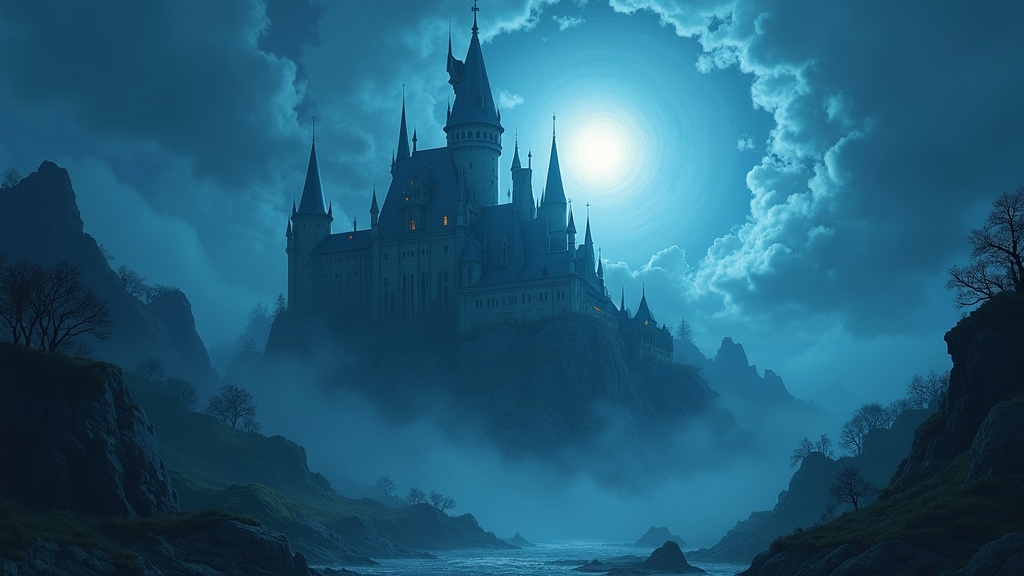Symphonic metal brings together the best parts of heavy metal and classical music, forging a massive sound that’s dramatic, emotional, and actually pretty catchy for anyone who loves big choruses and soaring melodies. This genre grabs my attention every single time—mainly because of how it mixes roaring guitars with the elegance of orchestras, choirs, and sometimes even operatic vocals. Even if you’re new to metal, symphonic metal really draws people in, offering up epic soundscapes and a punch of power that transform each song into an immersive, movie soundtrack moment.

The Glow-Up of Symphonic Metal
The roots of symphonic metal go all the way back to the early ’90s, when metal bands started to experiment with keyboards, string sections, and elements you’d normally only hear at a classical concert. At the beginning, bands simply layered some synths over heavy riffs, but things accelerated quickly. Soon, full orchestras and choirs became a regular part of the mix. The idea of fusing harsh guitars with rich symphonic arrangements helped bring in fans who might not have otherwise ventured into metal.
This genre really took off in Europe, especially in countries like Finland, the Netherlands, and Germany. Early trailblazers such as Therion set the tone by featuring real orchestras and launching albums with an atmosphere reminiscent of fantasy films. Bands like Nightwish and Within Temptation followed suit, blending powerful melodies, intricate storytelling, and lush musical arrangements.
Symphonic metal didn’t just stick to one mold; it expanded to include everything from beauty-and-the-beast style duet vocals (growls paired with clean singing), to operatic lead singers, massive choirs, and concept albums that function as sprawling stories. Eventually, fans across the globe—from Europe to Asia to the Americas—found their way to the genre’s bombastic and cinematic style.
Key Features of Symphonic Metal
What sets symphonic metal apart is its unique blend of guitar-driven power with the epic scope of classical music. Here are a few hallmarks of the style:
- Orchestral Arrangements: Expect layers of strings, massive brass sections, and sometimes actual symphony orchestras performing alongside the band.
- Operatic and Clean Vocals: Many bands have vocalists with real classical training, so it’s not unusual to hear full operatic vocals, particularly with female leads.
- Theatrical Themes: Lyrics often revolve around fantasy, mythology, history, or even philosophical musings, delivering a strong sense of drama and story.
- Choirs and Layered Harmonies: Choir vocals pepper songs throughout, adding even more emotion and drama to the mix.
- Mix of Heavy and Melodic: Thunderous drumming and crisp guitars blend with melodic keyboard or orchestral backgrounds, producing a detailed and multidimensional sound.
The genre’s willingness to mix in various influences—from folk and pop to progressive elements—makes it appealing to a wide range of music fans.
Top Symphonic Metal Bands Globally
After countless hours spent tuned in to symphonic metal, I’ve noticed a handful of groups consistently shape and lead the scene. Here’s a rundown of some of the most influential and next-level cool bands worth listening to:
- Nightwish (Finland): This is the band everyone talks about as a major pioneer. Their blend of operatic female vocals, grand symphonic elements, and dramatic songwriting shines out. Switching from Tarja Turunen’s classical powerhouse voice to Floor Jansen’s versatility, Nightwish remains both fresh and monumental.
- Within Temptation (Netherlands): Known for lush compositions that blend rock and pop touches, Within Temptation features Sharon den Adel’s unforgettable vocals, evolving from gothic roots into sleek stadium anthems.
- Epica (Netherlands): True to their name, Epica puts out cinematic, choir-laden metal with ambitious concepts and philosophical themes. Simone Simons’s impressive vocals and Mark Jansen’s growls balance that iconic “beauty and the beast” dynamic.
- Therion (Sweden): As one of the early founders, Therion morphed from death metal into full-blown symphonic territory, adding choirs and classically-inspired arrangements throughout albums like “Theli.”
- Delain (Netherlands): Delivering catchy melodies and accessible songs, Delain infuses the symphonic template with a dash of pop, frequently featuring special guests and polished studio work.
- Symphony X (USA): These guys up the ante with a progressive twist, showcasing technical skill, orchestral backdrops, and storytelling—especially notable on “The Divine Wings of Tragedy.”
- Kamelot (USA/Germany): Fusing power metal with symphonic flavors, Kamelot builds rich atmospheres and emotional lyrics and often collaborates with guest artists, keeping the music dynamic and theatrical.
- Leaves’ Eyes (Germany/Norway): Immersed in Nordic mythology, this group blends folk elements with sweeping symphonic tones, with Elina Siirala delivering atmospheric vocals that perfectly match the cinematic instrumentals.
- Rhapsody of Fire (Italy): These musicians turn out fantasy-driven power metal stuffed with orchestras and elaborate storylines, acting as the soundtrack to grand adventures.
- Xandria (Germany): Their sound is dramatic and memorable, featuring powerful orchestrations and standout hooks, especially heightened when Dianne van Giersbergen took the vocal lead in their recent releases.
- Beyond the Black (Germany): As a newer face on the scene, Beyond the Black’s melodic hooks, strong symphonic accents, and Jennifer Haben’s clear vocals have found them fans worldwide.
- Sirenia (Norway): Weaving gothic moods with symphonic drama and alternating singing styles, Sirenia lays down a darker, more immersive vibe.
These bands represent the best starting point for anyone wanting to get into the world of symphonic metal. Their popularity globally and presence at major music festivals confirm their influence in shaping the genre.
How to Jump Into Symphonic Metal
If you’re just starting out with symphonic metal, the sheer variety can feel overwhelming. With styles from pop-friendly tunes to dark, brooding atmospheres, here’s a straightforward guide for exploring:
- Pick a Theme You Like: Interested in fantasy, history, or mythology? Many bands base albums on these ideas. Rhapsody of Fire channels high fantasy, while Leaves’ Eyes dives into Norse legends.
- Try the Big Albums: Start with the most listened-to records. Nightwish’s “Once,” Epica’s “Design Your Universe,” and Within Temptation’s “The Silent Force” are excellent entry points that aren’t overwhelming.
- Watch Live Shows: Symphonic metal truly shines live. The spectacle of massive orchestras, choirs, intense lighting, and passionate crowds is something special. Check out concert specials from Nightwish, Epica, or Within Temptation to get a feel for the energy.
- Sample Subgenres: If you enjoy power metal, try Kamelot or Rhapsody of Fire. Prefer gothic shades? Sirenia and Xandria deliver. For progressive elements, spin some Symphony X. This genre really has a flavor for everyone.
Things You Should Keep in Mind Before Jumping In
Symphonic metal has a few quirks that might surprise those used to more straightforward rock or metal:
- Long Songs: Tracks can run for 10 minutes or more, and some albums form multipart suites that tell a full story.
- Top-Tier Production: With orchestras and choirs, expect polished mixes that sometimes go all-out on the drama—totally fitting for the style.
- Theatrics & Imagery: Elaborate music videos, fantasy-style artwork, and stage costumes are common, adding to the overall effect.
- Lyrics & Languages: English isn’t always the main language, and narratives are often deep, sometimes requiring a little research to unpack. If you like lyrics with substance, you’ll appreciate it.
Songwriting and Composition
Writing a symphonic metal song goes far beyond crafting a riff. Some bands construct entire albums as stories—mini rock operas. These artists often game plan with classical composers, guest musicians, and orchestras to create complex, immersive experiences. Epica, for instance, frequently works with classical composers for authentic orchestral scores rather than relying only on keyboards.
Live Performances and Festivals
One thing I truly enjoy about symphonic metal is how bands transform the live experience. It’s not unusual to witness a full choir or a thirty-piece orchestra on stage alongside a traditional band setup. Massive festivals like Wacken Open Air in Europe regularly host breathtaking symphonic metal sets in front of vast audiences. Live videos of these performances can give you goosebumps—even if you’re just listening at home with headphones on.
Frequently Asked Questions
If you’re exploring symphonic metal for the first time, you might bump into some of these questions:
Question: Is symphonic metal only about female vocals?
Answer: Not at all! While many bands do feature classically-trained women as vocalists, there are plenty of groups using male vocalists—both clean and growled—and sometimes duets. It’s a flexible scene.
Question: Do I have to enjoy classical music first to appreciate symphonic metal?
Answer: No need! The symphonic touches add grandeur and color, but if you already like rock or metal, you’ll probably discover something you love. The heavy riffs and catchy hooks stay front and center.
Question: What sets symphonic metal apart from power metal?
Answer: Symphonic metal places a big emphasis on orchestration and choir arrangements, while power metal typically goes faster, with fantasy lyrics and higher vocals. Some bands walk the line between both genres, giving you the best of both worlds.
The Influence and Future of Symphonic Metal
Symphonic metal isn’t locked into a single groove. Bands constantly mix things up by bringing in folk, progressive, and even electronic sparks. Up-and-coming names like Beyond the Black and long-time favorites adapting their sound with each new album keep the scene fresh. Special orchestral collaborations also highlight how creative and exploratory the genre can be.
Getting into symphonic metal opens your world to music in new ways—whether it’s the gigantic arrangements, sweeping stories, or just the next-level cool blend of metal and orchestral energy. Spin a few tracks from different bands, attend a show if you can, and you might just stumble upon your new favorite sound. The adventure’s always just beginning in symphonic metal.
